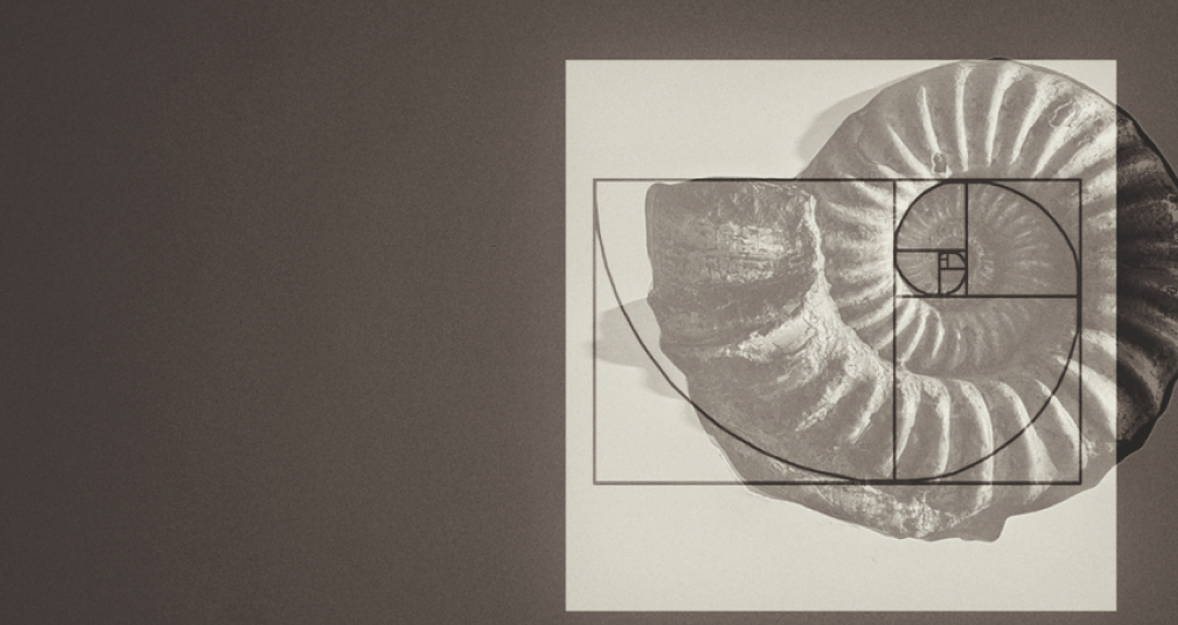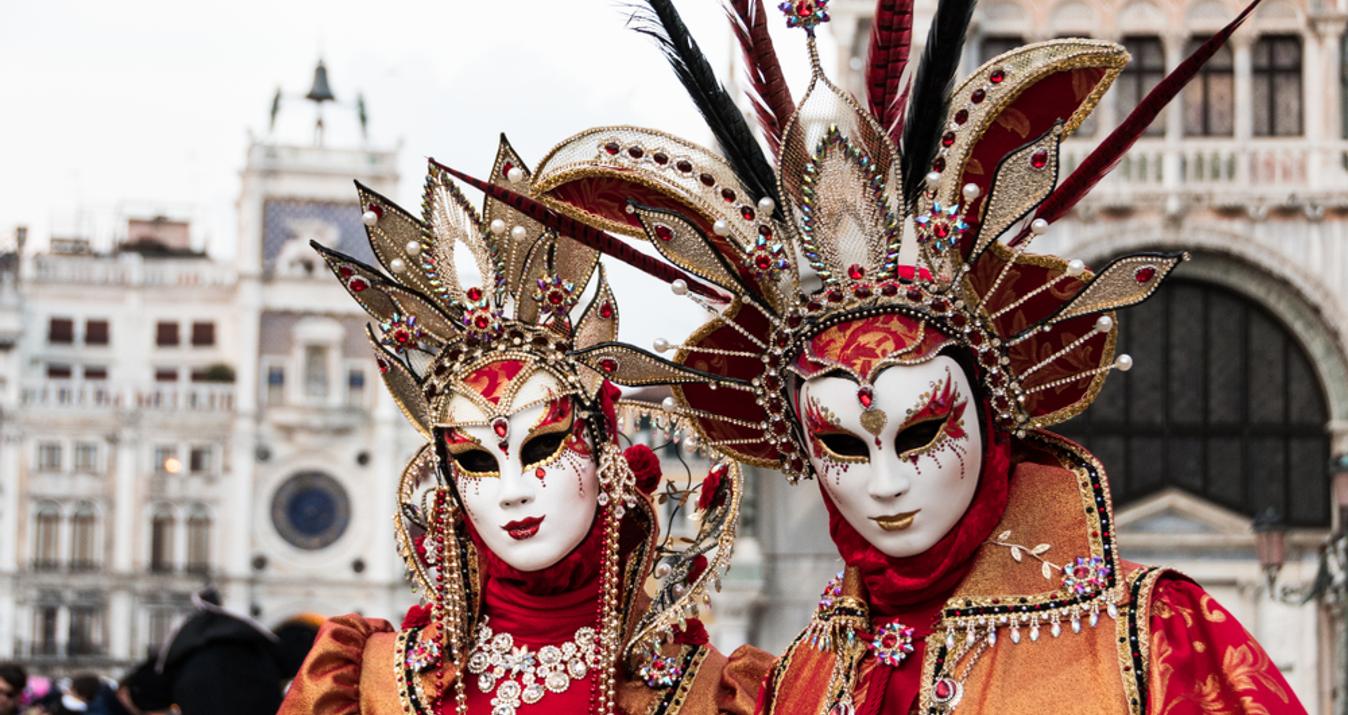Golden Ratio in Art: The Secret to Perfect Composition
Last Updated on August 12, 2025

Discover how the golden ratio shapes art, photography, and iconic brand logos like Twitter, Pepsi, and Mercedes-Benz, creating perfect balance and visual harmony.
Artists, architects, and photographers have long been trying to find a prescription of perfection, some formula of proportions that would satisfy the eye and bring about the feeling of harmony. This is referred to as the golden ratio. It is hidden in nature, in famous paintings, in buildings, and even in our bodies. The golden ratio in art is relevant and remains a tool for achieving harmony and aesthetic appeal.
Harmony and brand: the golden section as a tool of our time
 The golden ratio has been repeatedly used to create logos of well-known companies, namely:
The golden ratio has been repeatedly used to create logos of well-known companies, namely:
Twitter — the logo is a bird located in a simple square. It was developed based on the golden ratio to create the shape and proportions. This emphasizes the lightness and dynamism of the social network.
The Pepsi logo is an example of the use of the golden ratio. The logo is perfectly balanced and proportional due to the use of circles and colors.
Mercedes-Benz is a minimalistic but very elegant star symbol. The lines forming the logo create a perfect composition with the help of the golden ratio. The logo has a circular shape, and the arrangement of each point helps to achieve harmony and communicate the high quality of the brand.
The proportions used in the design will enable it to be balanced, capturing attention and making an impression on consumers. To develop some compositions on an Apple computer, you'll need a Free Mac Photo Editor. The success of these companies is an example of integrating the golden number into branding and using it to create works of art.
What is the Golden Ratio in Art
 Don't know what the golden ratio is? The Golden Ratio is a mathematical proportion that is believed to be “perfect” and aesthetically “beautiful”. Its value is almost 1.618. Pythagoras introduced the concept of the golden ratio. It is believed that he borrowed the knowledge of the golden ratio from the Egyptians or Babylonians. This proportion is used in art to create a composition that will attract the eye and bring balance. The golden ratio can be obtained by dividing a segment into two equal ratios: the smaller part to the larger part and the larger part to the whole.
Don't know what the golden ratio is? The Golden Ratio is a mathematical proportion that is believed to be “perfect” and aesthetically “beautiful”. Its value is almost 1.618. Pythagoras introduced the concept of the golden ratio. It is believed that he borrowed the knowledge of the golden ratio from the Egyptians or Babylonians. This proportion is used in art to create a composition that will attract the eye and bring balance. The golden ratio can be obtained by dividing a segment into two equal ratios: the smaller part to the larger part and the larger part to the whole.
Exclusive Tools of Endless Possibilities in One AI Editor
Explore Now!Knowledge of the Divine Proportion
The golden number is a deep sense of harmony that we intuitively perceive as beauty. It manifests itself in everything from natural forms to architectural masterpieces. Back in the Renaissance, this proportion was considered the embodiment of an ideal order in the world, combining the spiritual and the material, chaos and utopia. When artists use it in their compositions, the viewer often does not even realize why, but feels aesthetic pleasure.
The Mathematical Formula Behind the Golden Ratio
 Mathematically, the golden ratio can be defined as the solution to a quadratic equation. By solving it, we get a quantity called the “divine proportion”. This value appears as a phenomenon that has meaning in many spheres of activity.
Mathematically, the golden ratio can be defined as the solution to a quadratic equation. By solving it, we get a quantity called the “divine proportion”. This value appears as a phenomenon that has meaning in many spheres of activity.
The famous application of the golden ratio is the Fibonacci sequence, consisting of a group of numbers, each of which is the sum of the previous two. Taking ratios of consecutive numbers in this sequence, you will find that it will get nearer and nearer to the golden ratio. This shows that this proportion is embedded even in the simplest numerical patterns.
Golden Ratio vs. Golden Section vs. Golden Proportion
 The three terms resemble and differ in context and scope. What is the golden section? It’s the geometric expression of the golden ratio used in art and architecture. The Golden Ratio — more about algebra: numerical values and formulas. The Golden Proportion is used in art, design, and nature. The central context is about aesthetics, symmetry, and the effects of vision. Lens flare can get in the way of creating a masterpiece and ruin a photo, but don't be discouraged, because we have tips to help you create a high-quality photo in just 5 minutes.
The three terms resemble and differ in context and scope. What is the golden section? It’s the geometric expression of the golden ratio used in art and architecture. The Golden Ratio — more about algebra: numerical values and formulas. The Golden Proportion is used in art, design, and nature. The central context is about aesthetics, symmetry, and the effects of vision. Lens flare can get in the way of creating a masterpiece and ruin a photo, but don't be discouraged, because we have tips to help you create a high-quality photo in just 5 minutes.
Here is a fun fact: Leonardo da Vinci applied the golden ratio in his drawings and writings, especially in “the Vitruvian Man.” He believed that the human body fits perfectly into this proportion. He tried to study it mathematically.-4339.jpg?q=85&w=840)
The Golden Ratios and the Human Eye: Why We Love It
 The human eye perceives the golden ratio better than other cultural phenomena because our brains are drawn to patterns and symmetries, and the divine ratio is all about equality. The golden ratios are often found in nature:
The human eye perceives the golden ratio better than other cultural phenomena because our brains are drawn to patterns and symmetries, and the divine ratio is all about equality. The golden ratios are often found in nature:
Facial symmetries — faces that match this proportion are often perceived as attractive;
Spirals in nature — snails, storms, galaxies;
The structure of DNA, namely the angle of twisting of the spiral, is close to φ.
Balanced shapes are also perceived easily by our brain. The golden ratio in art gives an impression of balance and beauty. It is neither elongated nor short — the perfect golden mean.
The Psychological Impact of the Golden Ratio
People who more often observe harmonious images (especially those based on the golden number) reduce anxiety levels and improve concentration. Golden sections are used in neurolinguistic techniques that help you focus on a single wish, the fulfillment of which will entail positive emotions.
The Science Behind Aesthetic Appeal
Our brains react to harmonious forms so intuitively that we perceive the golden number even when we are not aware of its existence. This hides systems from biology, psychology, neuroscience, and even mathematics. Structures built according to the golden ratio are easier to perceive — they do not cause tension or surprise. You don't know what is the golden ratio. But the brain does, and it reacts instantly. The intellect can easily recognize the golden ratio, but it happens subconsciously, which is the reason we don't even bother to understand whether it was the golden ratio or just a Coca-Cola logo.
Famous Examples of the Golden Ratio in Art
The golden ratio was used by many famous painters and artists, including Leonardo da Vinci, Michelangelo, Hokusai, Piet Mondrian, Salvador Dalí, and Le Corbusier. All of these people created artistic works without the technology of our time, and we have photo editing software for beginners, in which you can easily use the golden number to create your composition.
Vitruvian Man (Leonardo da Vinci)
 Vitruvian Man by da Vinci is a drawing of how an ideal human body sets out the proportions of the golden ratio. He is one of the few who used the golden section in art.
Vitruvian Man by da Vinci is a drawing of how an ideal human body sets out the proportions of the golden ratio. He is one of the few who used the golden section in art.
Vitruvian Man by Leonardo da Vinci is a drawing illustrating the proportions of the golden ratio. The drawing is composed of two overlying poses of the male figure: the limbs apart and written in a circle, and the limbs apart and drawn together and written in a square. Don't know what double exposure is? Double exposure in photography is a technique where two or more images are superimposed on top of each other in the same frame. In the classic version on a film camera, this means that the frame is exposed twice without rolling the film. In digital photography, this effect can be created either in the camera itself or with the help of graphic editors such as Luminar
The Last Supper (Leonardo da Vinci)
-2686.jpg?q=85&w=840) The golden ratio can be applied to assess a Leonardo da Vinci painting called The Last Supper. The fresco “The Last Supper” depicts a key moment from the Gospel — the last meal of Jesus Christ with his eleven apostles before his crucifixion.
The golden ratio can be applied to assess a Leonardo da Vinci painting called The Last Supper. The fresco “The Last Supper” depicts a key moment from the Gospel — the last meal of Jesus Christ with his eleven apostles before his crucifixion.
It is not quite known that he used this principle consciously in everything, and still, many researchers refer to the fact that the construction of the fresco testifies to the elements that follow the golden section and contribute to the attainment of harmony and aestheticism in the work.
Hokusai: The Great Wave off Kanagawa
 The Great Wave in Kanagawa is a prime example of the use of a mathematical principle to create a visually appealing composition. The print depicts three boats moving through a stormy sea, with a large wave forming a spiral in the center above the boats and Mount Fuji in the background. Kanagawa's Great Wave has been described as perhaps the most reproduced image in the history of art.
The Great Wave in Kanagawa is a prime example of the use of a mathematical principle to create a visually appealing composition. The print depicts three boats moving through a stormy sea, with a large wave forming a spiral in the center above the boats and Mount Fuji in the background. Kanagawa's Great Wave has been described as perhaps the most reproduced image in the history of art.
The use of the golden ratio creates a sense of balance among the chaotic forces of nature.
Piet Mondrian: Composition in Red, Yellow, Blue, and Black
 Modrian tried to create universal harmony in his work, and the golden section was one of the instruments to reach his goal.
Modrian tried to create universal harmony in his work, and the golden section was one of the instruments to reach his goal.
“Composition with Red, Yellow, Blue, and Black” is a great example of how abstract art can be deeply structured and harmonious.
Le Corbusier: The Golden Section in Architecture
Le Corbusier used the golden proportion in his architecture. Corbusier developed his own Modulor system based on the proportions of the human body and the golden ratio.
Modulor's graphical scheme is a human figure with a raised arm and two proportional scales, red and blue.
How to Use the Golden Ratio in Art and Painting
The golden ratio art is needed for proportionality and framing. To apply the golden ratio art, you'll need the best picture editing software to help you process your photos or compositions.
The Golden Rectangle and How It Works
 A golden rectangle has an aesthetic balance and is popular with artists. The golden rectangle is ideal in structuring a scene because of its ratios. Setting the objects at the edges or the points of the internal grid of the golden rectangle helps you to structure the complicated visual content without losing expressiveness and dynamics.
A golden rectangle has an aesthetic balance and is popular with artists. The golden rectangle is ideal in structuring a scene because of its ratios. Setting the objects at the edges or the points of the internal grid of the golden rectangle helps you to structure the complicated visual content without losing expressiveness and dynamics.
Tip: You can adopt the golden rectangle structure as a compositional grid that will assist you in arranging elements in the frame harmoniously without overcrowding the composition.
The Golden Spiral: A Natural Flow in Art
 A golden spiral is a curve built from golden rectangles. To build the scene, use the golden spiral grid as a masking layer in a graphic editor, or draw it manually with a pencil on your sketch. The golden spiral harmonizes well with the focal point, creating a fluid, natural look.
A golden spiral is a curve built from golden rectangles. To build the scene, use the golden spiral grid as a masking layer in a graphic editor, or draw it manually with a pencil on your sketch. The golden spiral harmonizes well with the focal point, creating a fluid, natural look.
Golden Triangles and Their Use in Composition
 A golden triangle is an isosceles triangle in which the aspect ratio corresponds to the golden ratio. It is utilized in a composition to segment the plane and to position things appropriately. One can combine the golden triangles, and one of them can visually dominate over the other, making them more engaging to the viewer.
A golden triangle is an isosceles triangle in which the aspect ratio corresponds to the golden ratio. It is utilized in a composition to segment the plane and to position things appropriately. One can combine the golden triangles, and one of them can visually dominate over the other, making them more engaging to the viewer.
The “Other” Golden Rule in Art: The Rule of Thirds
 The Rule of Thirds is a powerful rule of composition used in photography, painting, design, and film. It is also sometimes called the other golden rule in art because it also has harmonious proportions. The rule of thirds gives the scene balance and dynamics, stimulates the viewer's free movement along the composition, and improves the emotional perception of the composition.
The Rule of Thirds is a powerful rule of composition used in photography, painting, design, and film. It is also sometimes called the other golden rule in art because it also has harmonious proportions. The rule of thirds gives the scene balance and dynamics, stimulates the viewer's free movement along the composition, and improves the emotional perception of the composition.
When Artists Ignore the Golden Section
Many people deliberately ignore the golden rule in art to achieve emotional intensity and create an individual style, while contemporary artists, photographers, and designers simply do not see the need to use the golden ratio in art. Ignoring the golden ratio is a creative strategy, and the main thing in art is not to follow the rules, but to break them.
Enhancing Your Golden Ratio with Luminar Neo
 You can apply the app Luminar Neo by Skylum to improve the golden ratio. The app has features that you can use to frame your image to ensure accuracy and enhance your composition. This is how it can be done:
You can apply the app Luminar Neo by Skylum to improve the golden ratio. The app has features that you can use to frame your image to ensure accuracy and enhance your composition. This is how it can be done:
Load the photo to Luminar Neo.
Choose the crop icon in the toolbar (typically frame icon).
There will be the choice of placing a grid overlay in the clipping tool window. Choose Golden Ratio or Fibonacci Spiral. Luminar Neo will overlay imaginary lines or spirals on your photo that indicate the ideal points and lines to place your subjects.
Use the edges of the frame to place your main subjects in these lines or at the crossings (eyes, face, horizon, etc.). Such as, in a portrait, attempt to have the eyes of the model meet at the point on the lines.
In case of necessity, make the visual effect of the golden ratio more pronounced and focus on objects at points.
Luminar Neo has several powerful AI-based tools that can indirectly enhance the golden ratio. Accent AI is another automatic tool that will analyze your image and change the contrast, exposure, and colors. If you have some color going on with your main subject that you want to draw attention to, then Color Harmony is your best choice. Portrait Bokeh AI will blur the background and keep the face sharp, and it does it for you.
Your AI-Powered Photo Editor for MacOS and Windows
Discover Now!Mastering the Golden Ratio in Art
The golden ratio is an efficient tool that allows you to create artwork that is aesthetically pleasing and harmonious. It demonstrates its impact on the works of art of Leonardo da Vinci, the architectural structures of Ancient Greece, and modern design.
Applying this rule does not restrict your creativity, but instead gives you something good to experiment with. Learning to position the core aspects at the points of intersection of imaginary lines, you will be able to capture the attention of the viewer and imbue the picture with a sense of balance and motion.
To create artistic perfection, artists and designers appeal to the golden ratio, arriving at the creation of works that would appeal to the viewer on the subconscious level and provide them with the feeling of beauty and perfection.





